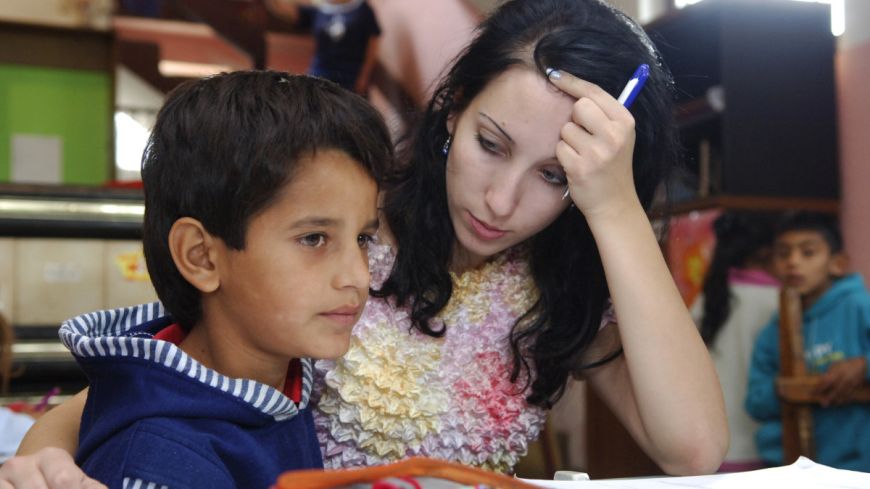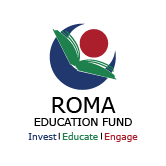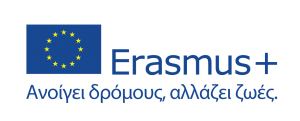Αρχική » Άρθρα με ετικέτα 'European policies'
Αρχείο ετικέτας European policies
TPM 3 Kos Models Shaping REF Interventions
REF has extensive experience and knowledge surrounding the types of interventions in and approaches to Roma education. REF currently structures its grants around five good practice models for achieving impact in different countries and policy settings.
Embedding effective models for Roma education requires strong partnerships with national and local education authorities and implies intense communication with them throughout the process of adjusting best practice models to national and local contexts.
Expanding Access to Preschool Education: Early Childhood Education
REF’s early childhood education model aims to improve the school readiness and early childhood development outcomes of Romani children under age six by improving the enrollment and attendance in the mainstream preschool services; enhancing the parenting skills and improving the practices of Romani parents; strengthening the link between parents and preschool and kindergarten facilities; and raising the quality of early childhood education services, such as teaching and learning methods.
Avoiding Early School Leaving in Primary Education
The primary education model intends to improve the primary education outcomes of Romani children aged between six and fourteen by supporting primary education enrollment and school-after-school programs (tutoring and mentoring) with improved access (enrollment) to primary education, preventing early school leaving, enhancing parental skills, and strengthening the link between parents and schools, providing remedial classes to children and offering professional support and guidance to school staff and authorities.
Expanding Access to Secondary Education
The secondary education model aims to improve the academic performance of students and to maintain the retention and graduation rate of Romani secondary school students through better outreach, provision of scholarships, school-based mentorship support and tutorship support.
Expanding Access to Higher Education
The higher education model includes the component of RomaVersitas, a program intended to improve the retention, performance and graduation levels of Romani full-time tertiary education students. RomaVersitas provides academic tutoring and mentoring to help strengthen students’ Romani identity and community participation. This model consists of compulsory and optional components. It serves as a bridge for young Romani scholars and includes scholarships, mentoring, tutoring and additional training in professional development and foreign language competences.
Second Chance Programs for Adult Functional Literacy and Formal School Completion
The adult education and training model aims to improve the education level and employment prospects for young Romani adults. It provides those with incomplete primary and/or secondary education with tutoring and financial support for completing formal primary and/or secondary education. This model also aims to improve the literacy and social communication skills of illiterate and semi-literate Romani parents (mainly mothers) of preschool- and school-age children and enhance their involvement in their children’s education through provision of non-formal literacy and social communication skills trainings.
Presentation at TPM 3 Kos Greece Education of Roma Children

The Council of Europe began its involvement with the Roma in 1969 by adopting the first official text on the “situation of Gypsies and other Travellers in Europe”. In 1983 the Council organised the first training seminar for teachers working with Roma children. In 1993 the Roma population was declared a European minority. (περισσότερα…)
Open your mind 2- go beyond stereotypes!
There are nearly 10 million Roma living in the 47 member states of the Council of Europe. They suffer from widespread sterotyping and prejudice. In order to open our minds to their true situation we need to start teaching the reality in schools. This video, aimed mainly at children, deals with some common misconceptions concerning the Roma, through the scenario of a teacher addressing a class of pupils with a series of questions. For example, he asks them what kind of jobs they think Roma do, and which part of the world they came to Europe from.
Watch the video at
https://www.coe.int/en/web/human-rights-channel/-/open-your-mind-go-beyond-stereotypes-
National Roma Integration – 2014 review Key steps taken since 2011
BULGARIA
Education
Two-year obligatory pre-schooling introduced with language training if needed.
Gradual introduction of all-day school.
In three years (2010-2013), a Bulgarian educational project has brought down the number of children who drop out of school by almost 80%
Employment
80-95 Roma mediators appointed in local employment offices.
Community Development Centres (CDC) promoting the employment of young people and women in marginalised Roma communities were set up in 11 municipalities.
Job fairs targeted at the most disadvantaged including Roma.
Health
Mobile medical units and mediators in areas where the majority lacks health insurance.
X-ray, immunisation of children, medical and gynaecological exams, screenings and prevention of HIV and TB.
Health education and awareness-raising campaigns.
Increase in the number of Roma health mediators.
Housing
Launch of an EU co-financed housing initiative to provide quality homes within an integrated approach (addressing also employment, education and health challenges simultaneously) for Roma people in 4 municipalities (Burgas, Dupinitsa, Vidin, Devnya). The municipalities of Varna, Peshtera and Tundzha are also considering taking up this initiative.
Anti-discrimination (περισσότερα…)
Objectives at the EU level for the period up to 2030
The Commission sets seven objectives at the EU level for the period up to 2030. Three
of these objectives are horizontal in the areas of equality, inclusion and participation. The other
four are sectoral objectives in the areas of education, employment, housing and health. To
implement these objectives effectively, they need to be backed up with the ability to measure
progress.
Download the file here EU policies Horizontal Sectoral
Access to Early Childhood Education and Care for Roma children
 The Council Recommendation on high-quality Early Childhood Education and Care (ECEC) systems underlines the importance of access to ECEC services for all children and recalls that quality ECEC can be “an effective tool to achieve educational equity for children in a disadvantaged situation, such as some migrant or ethnic minorities (for example Roma)”.
The Council Recommendation on high-quality Early Childhood Education and Care (ECEC) systems underlines the importance of access to ECEC services for all children and recalls that quality ECEC can be “an effective tool to achieve educational equity for children in a disadvantaged situation, such as some migrant or ethnic minorities (for example Roma)”.
It can provide Roma children with a start in life that is equal to their non-Roma peers’, which is essential to break the cycle of intergenerational transmission of poverty. To reach this objective, ECEC needs to be accessible, available and affordable.
Low participation
As the percentage of Roma children aged between 4 and the starting age of compulsory primary education who participated in ECEC amounted to only 53% in the nine surveyed countries in 2016, the EU Roma strategic framework for equality, inclusion and participation for 2020-2030 set out an ambitious target of at least 70% of Roma children aged 3 and above participating in ECEC by 2030.
Viewpoint Roma – Rejected Europeans
Educational material Presented and discussed to all partner schools
Council of Europe Scolarisation of Roms
Educational material Presented and discussed to all partner schools
Country : Greece (Sofades) & Croatia (Kuršances)








